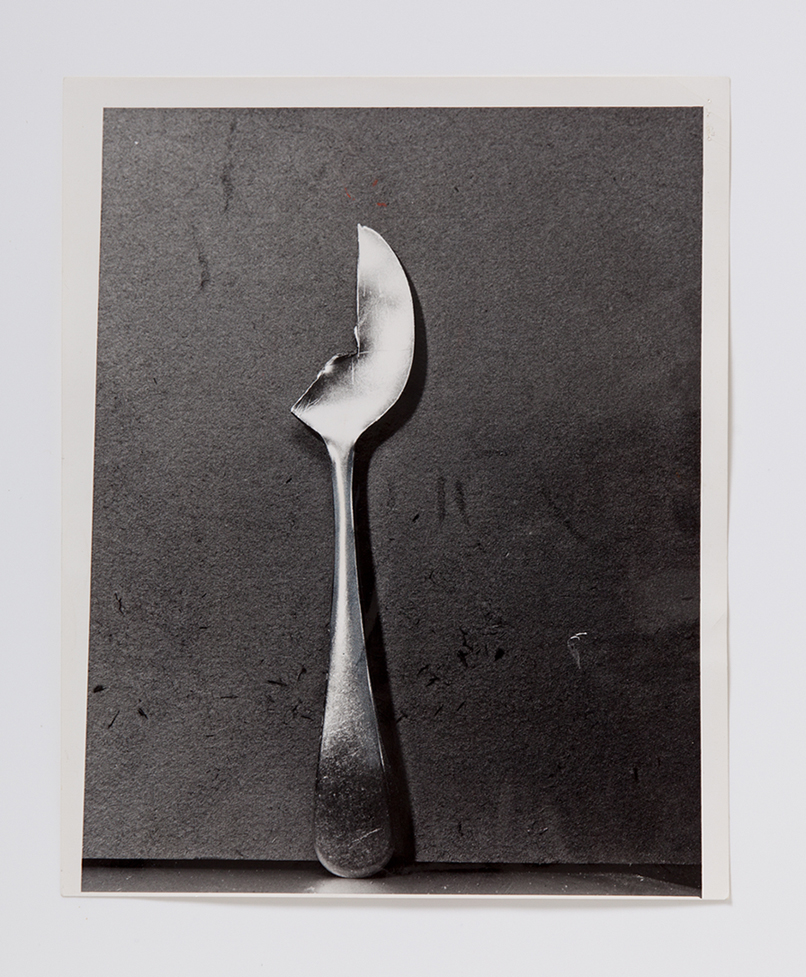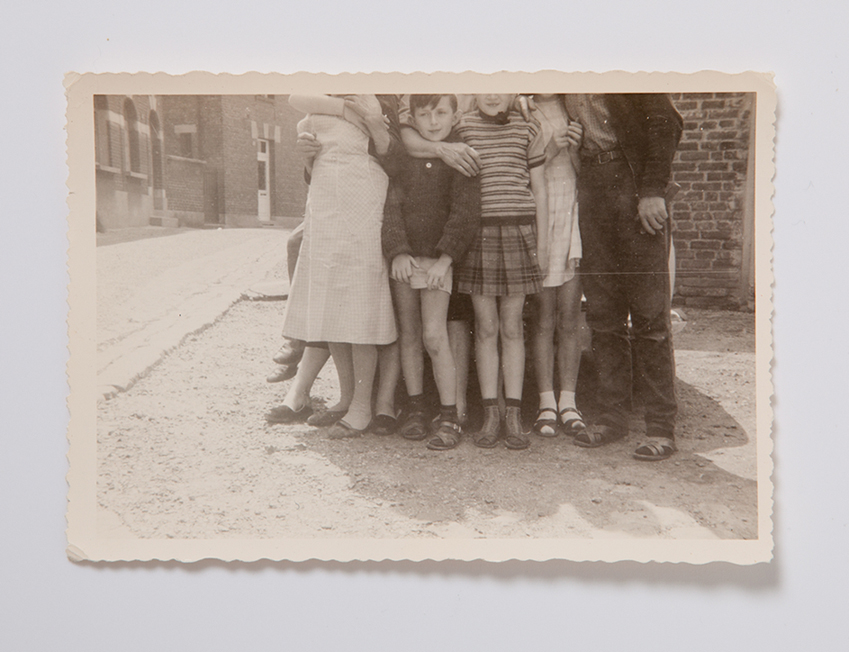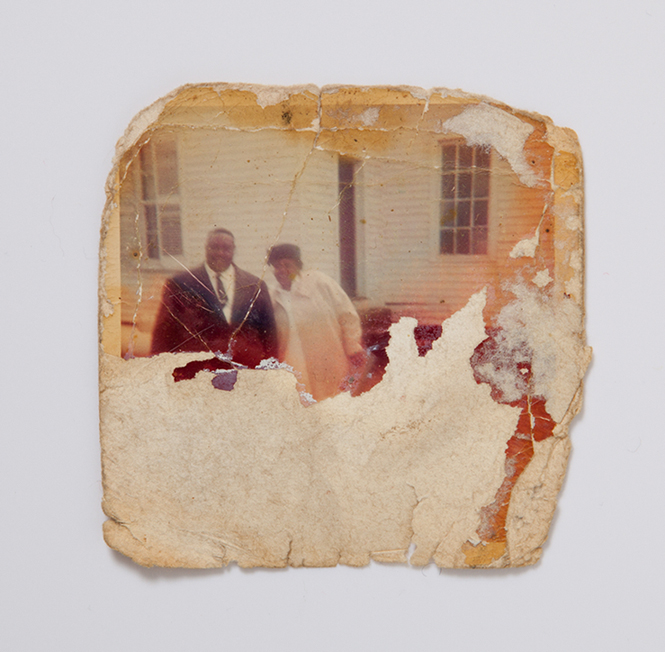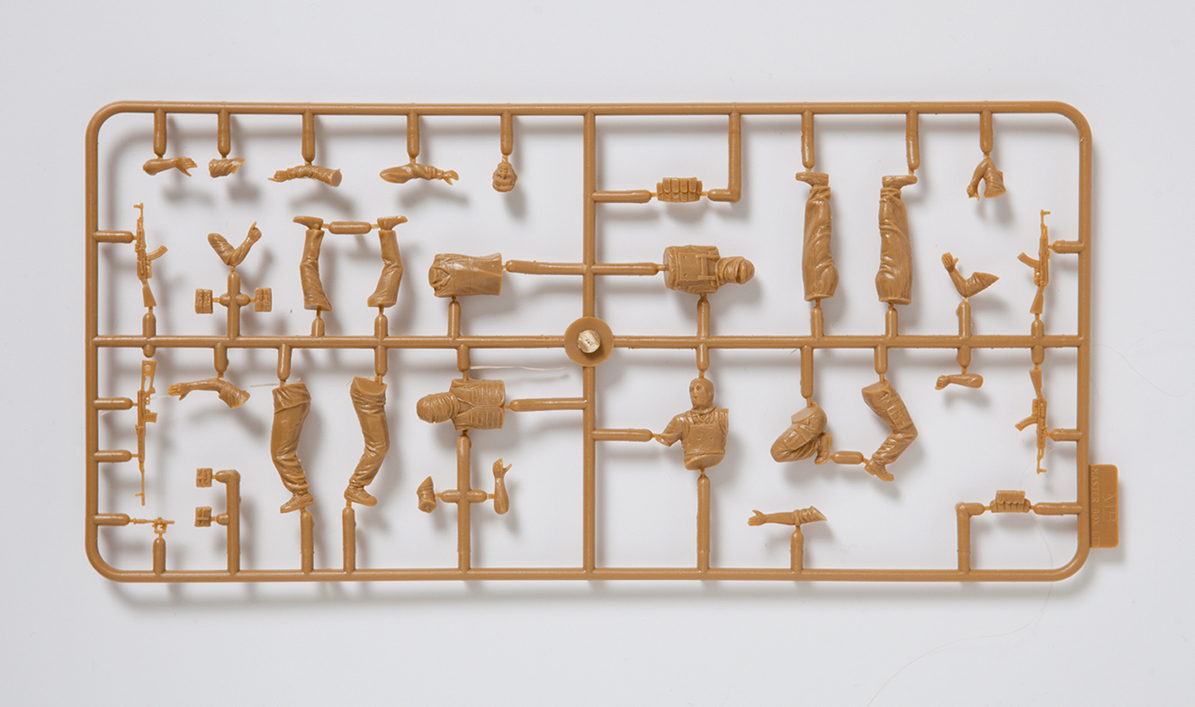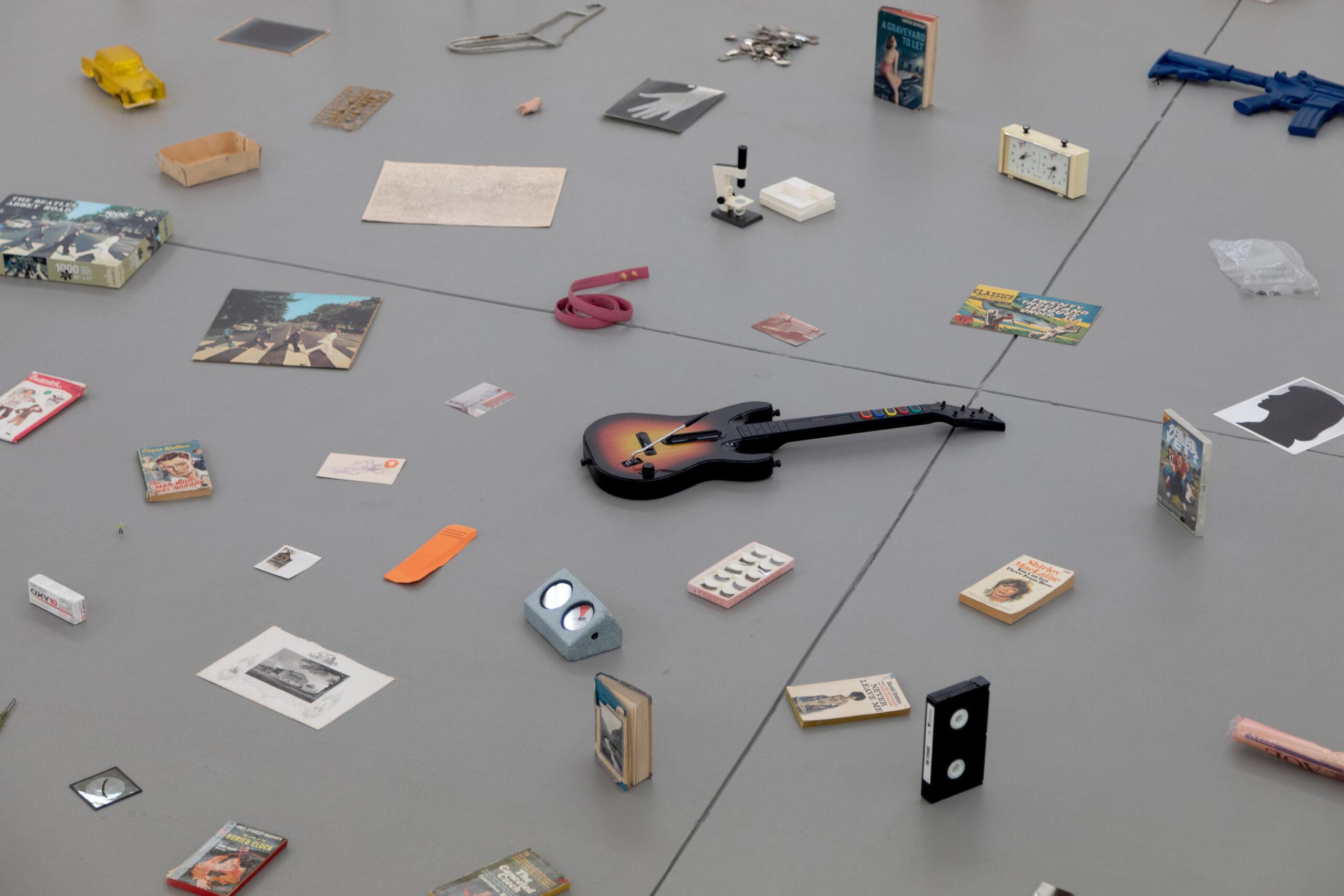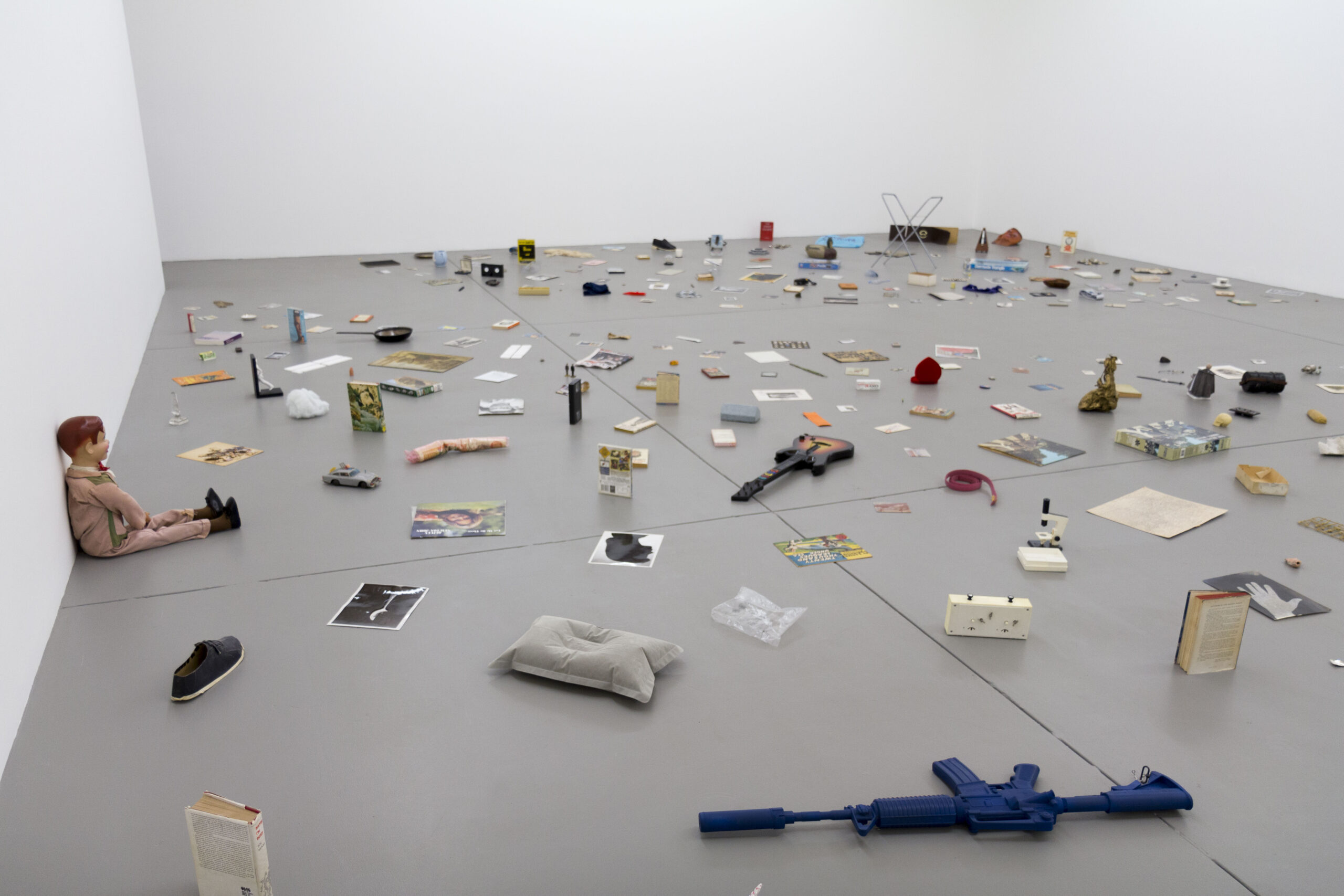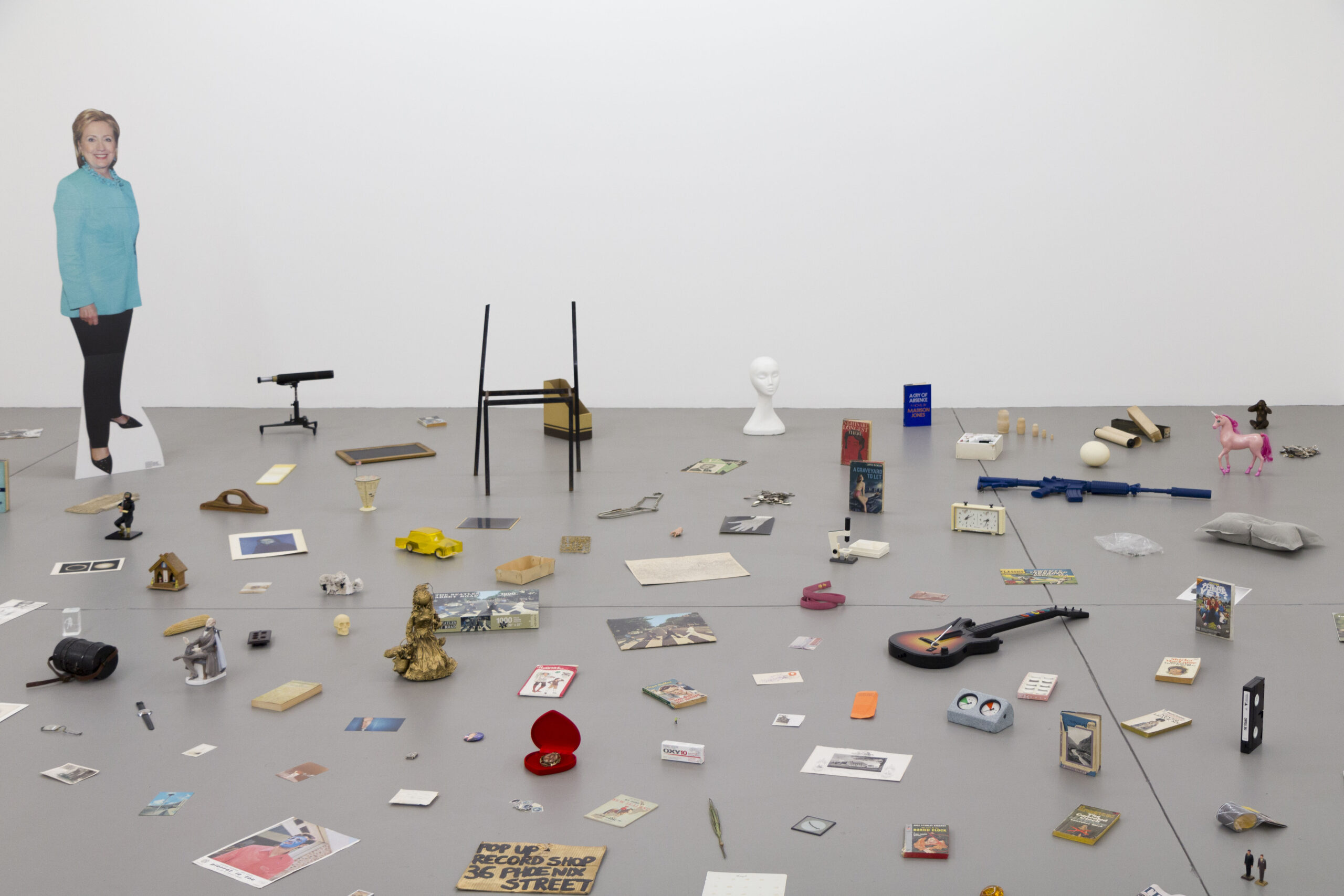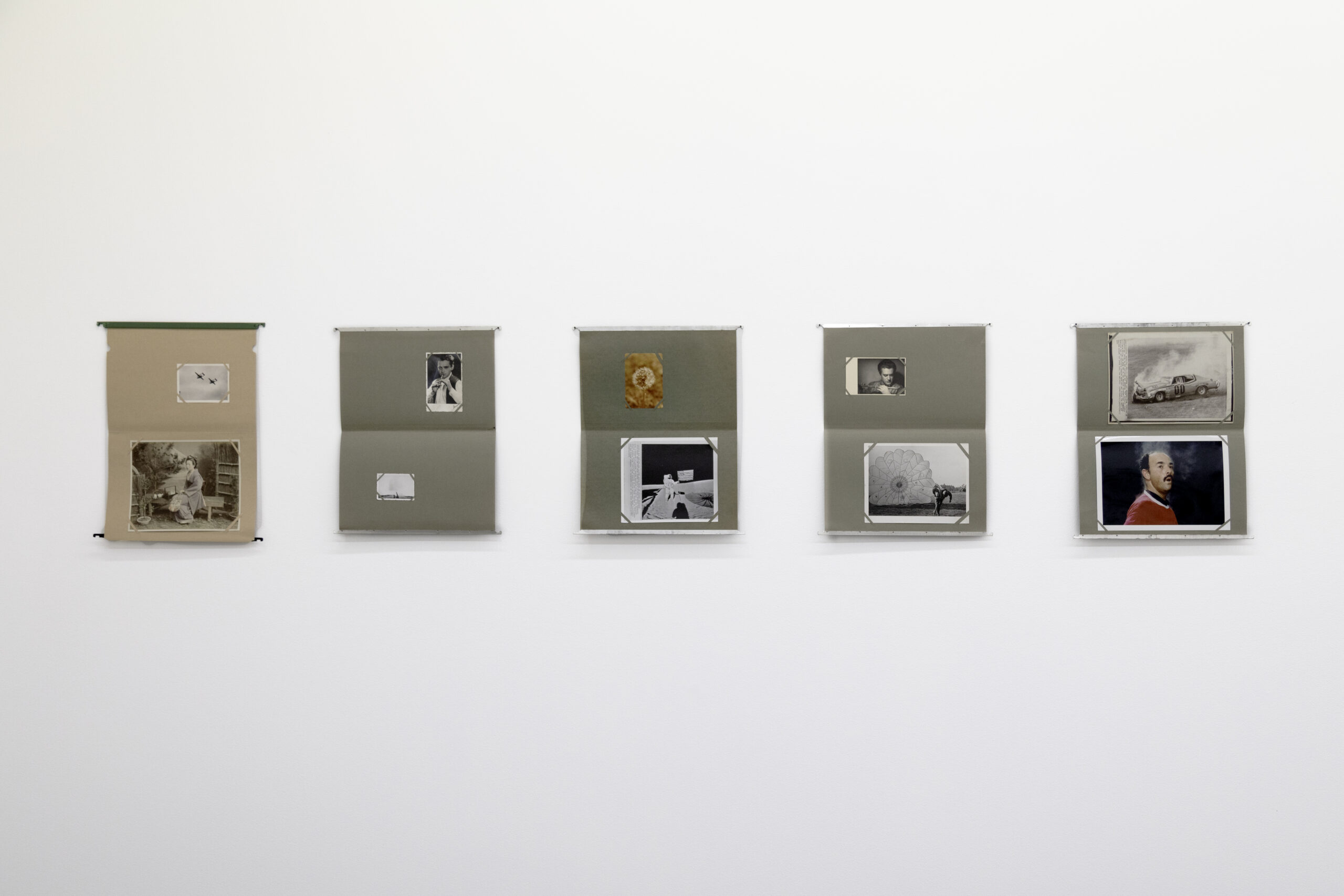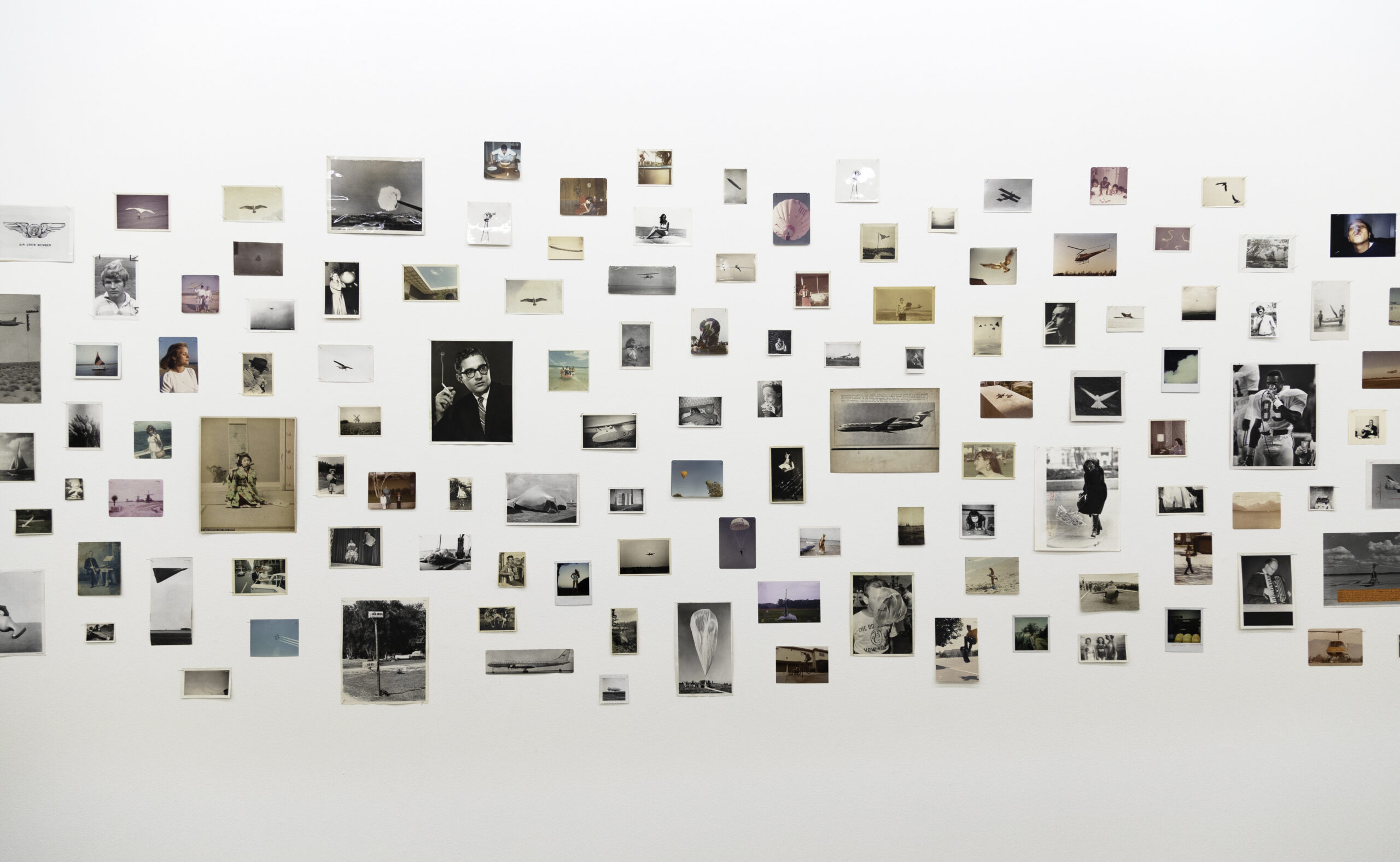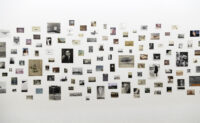
Patrick Pound, Photography and air (detail), 2020, found photographs, dimensions variable. Courtesy the artist and STATION.
Q&A with Patrick Pound
19.5.20
Artist Patrick Pound shares his insight into photography, his decision not to become a lawyer and how his artworks are puzzles that have already been solved. His current exhibition at STATION – The museum of there, not there – was planned as part of PHOTO 2020.
What started your relationship with photography?
I started by collecting newspaper cuttings of photographs from the newspaper. I liked the idea of the newspaper as a readymade collage machine. I also liked the idea of cutting out the images and putting them together in categories. There were people with their faces covered; things on fire, people holding photographs and so on. I also used to photograph tiny details from their real estate photographs with an early phone camera. I took these in black and white and in soft focus. Ironically, they ended up in a museum show of photographs, when Zara Stanhope put them in a survey of Australian contemporary photography at Heide back in 2007.
Why did you want to be an artist?
I don’t recall deciding to be an artist. I recall deciding not to be a lawyer though. I did consider becoming an art historian. I went so far as to get an art history Doctorate and that was a lot of fun.
What is your motivation for making art?
I don’t really think about my motivation for making art as it’s more like my default position. I simply want to see what happens when I put things together. I love that artists can make something out of nothing.
How do ideas relating to 'The Truth’ factor into your practice?
I prefer to leave the photographs I redeploy to speak for themselves. I am attracted to their documentary quality in that they are like rubbings of light. Sontag said that photographs aren’t so much representations of the world as they are pieces of it. I love this directness, but then again, I also rely on their fluid quality. Photographs are peculiarly evidentiary, but of what exactly, we can never be certain. They always remain remarkably and surprisingly pliable. Photographs are at once mirrors and portals.
In this post-internet age, how do you see the viewer in relation to your artwork?
I see the viewer as an active participant – a player in the puzzle I set. My works are puzzles that have already been solved. The viewer’s role is to test their wits against my collections.
Every viewer brings something different to the table. They not only find the clues and put the pieces together for themselves but they also see and make connections I can’t.
How do you go about developing new projects?
I usually think up an idea or two and go hunting for photographs and objects that might hold and express those ideas. I search eBay endlessly in a sort of call and response song and dance session with the algorithms of the internet. Sometimes I find something and then see another thing that has some unexpected relation to that first thing. The internet tends to show us what we like based on what we liked before. It assumes we like what we buy (laughs). I try and use the near neighbours and similar images and then to trip up the algorithm at its limit. I love the poetry of the misstep and the error. I might collect every object and image related to a search term like ‘Pan flute’ until the internet missteps and suggests that I buy a fluted pan. I love it when I am led to ‘make’ something I couldn’t think up for myself.
How does your lived experience influence your work?
I follow my interests no matter where they take me. I never thought that I would end up making art like this but then again, I have always been interested in collections and objects and the thingness of things if you will. It never occurred to me though, that my work would become more interesting when I stopped taking photos and started buying them.
Who or what inspires you?
Other artists and authors inspire and influence me. I have long been drawn to Georges Perec who wrote using literary constraints, such as his famous noel written without the letter ‘e’. Then there’s Auster and Borges and Calvino. Then the artists range from Alys to Broodthaers to Alvin Langdon Coburn – and that’s just if we start with the boys and the ABCs.
What books are you currently reading?
I like that the question is in the plural (laughs). I’m in a bit of a re-reading phase. Not sure if it’s my age or the age. I’m reading Henry James’s ‘The Golden Bowl’ and ‘The Spoils of Poynton’, and for new material, collections of Harald Szeemann’s writings and pawing over art books like Walid Raad’s terrific ‘Better Be watching Clouds’ and Batia Suter’s ‘Parallel Encyclopedia’, and too many others.
What is your favourite website or social media account?
My favourite website is eBay. I have a lot of Instagrammers that I follow closely. I love some who simply post images and then again, I get a lot out of those who go to a lot of trouble with their texts as well. @somewhereintheether are full of early scientific photo finds; billyparrott is great for vernacular with a twist; David Campany’s feed is full of connected images and information and generosity in the telling. I always look forward to Susan Bright’s posts too. Jim and Mary Barr’s art-related posts are always captivating and so are @ridiculously_interesting’s panoply of the spooky and the bizarre. Mxvortexdust (the artist Christian Thompson) is very funny. There’s an old friend in New Zealand @s.a.mckenzie whose texts are little poetic fait-divers that are a treat. I’m also loving Lara Strongman’s melancholy posts about moving to Sydney from New Zealand at this strange time.
What music are you listening to?
Lalo Schifrin and other 60s film music and a million other things. I spend a lot of time assembling Spotify playlists that align with my other collecting themes (laughs).
If the work you are presenting at PHOTO 2020 was a song, what would it be?
‘Distant Camera’ by Neil Young.
How are you spending your time with the current social distancing restrictions?
I am spending even more time on the internet searching for things and in my studio filing them away. While I’m at home more than usual, I am still teaching at Deakin uni of course, which is really rewarding but pretty challenging in these times.
How do you hope our creative community will overcome this unique challenge?
I think many creative people are well suited to lockdowns – it’s our default position (laughs).
While I’m all for creative responses, I can’t stand mawkish alignments, clutching to relevance (laughs).
Do you have any daily rituals?
Art making is a ritual of sorts. My art making is a ritual of sorting.
Do you have any unrealised projects you would like to work on?
When the curator Susan Bright and I were shortlisted for the Australian pavilion of the Venice Biennale this year we came up with some ideas I’d love to see come about in another form. They will of course. I’m collecting slowly towards that ends.
What advice would you give to your 15 year old self?
Don’t drop out of French class. Oh and, you’re going to need storage!
Patrick Pound’s exhibition The museum of there, not there closes on 23 May 2020. Visit STATION for more information.
